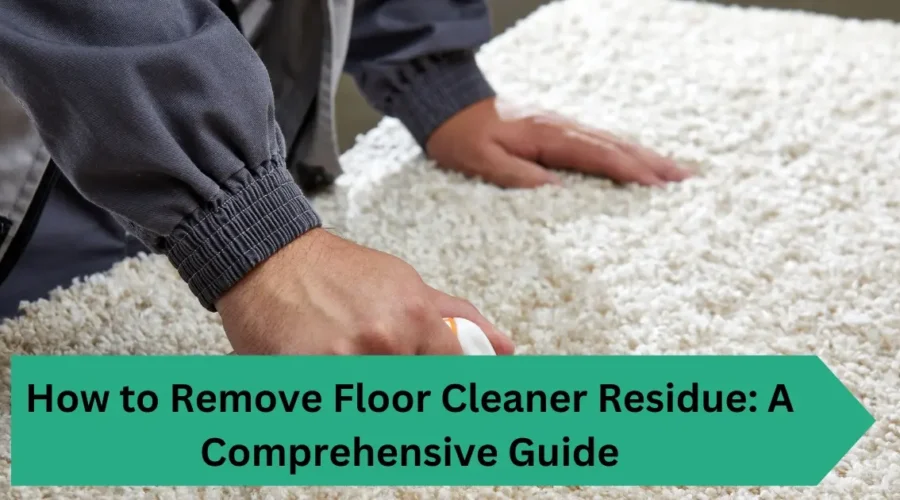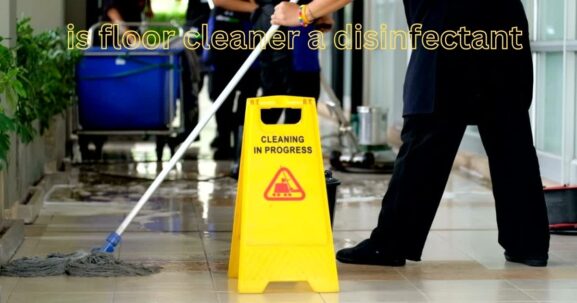How to Remove Floor Cleaner Residue: A Comprehensive Guide
Have you ever noticed a dull film on your floors despite regular cleaning? That’s likely due to floor cleaner residue, a common nuisance that can leave floors looking cloudy and feeling sticky.
This comprehensive guide delves into the causes of remove floor cleaner residue and offers expert advice on removing it, ensuring your floors shine bright and remain inviting.
Understanding Remove Floor Cleaner Residue
What Causes Floor Cleaner Residue? Floor cleaner residue is often the result of the surfactants in cleaning products. Designed to trap and lift dirt, these agents can sometimes cling to the floor surface, especially when cleaners are not properly diluted or when an excessive amount is used.
The Impact of Hard Water Using hard water for cleaning can exacerbate residue issues, as minerals in the water combine with floor cleaner, leaving a hard-to-remove film.
Key Strategies for Removing Floor Cleaner Residue
For Hardwood and Laminate Floors:
- Ammonia-Free Cleaner Approach: Begin with a gentle, ammonia-free cleaner like Windex. Apply it to small sections, allow it to sit, then scrub lightly with a soft brush or microfiber cloth before wiping clean.
- Natural Solutions: Mix equal parts of water and white vinegar for an effective, natural cleaning solution. This method is particularly suitable for laminate floors but use cautiously on hardwood to prevent damage to the finish.
- Mineral Spirits for Tough Residue: On hardwood floors, mineral spirits can remove stubborn residue. Apply sparingly with a soft cloth, always testing a small area first.
For Tile and Vinyl Floors:
- Baking Soda Paste: Create a paste with baking soda and water, apply to the residue, let sit, then gently scrub and rinse. This method is safe for most floor types and is effective in breaking down sticky films.
- Rubbing Alcohol: For more persistent residue on tile or vinyl, rubbing alcohol can be used as a spot cleaner. It evaporates quickly, reducing the risk of water damage.
Preventative Measures to Avoid Residue Build-Up
- Proper Cleaner Dilution: Always follow the manufacturer’s instructions for diluting concentrated cleaners.
- Appropriate Cleaner Selection: Use cleaners formulated for your specific type of flooring.
- Regular Maintenance: Sweep or vacuum regularly to prevent dirt accumulation, which can mix with cleaner residue.
- Use Soft Water: If possible, use soft or distilled water to minimize mineral buildup.
FAQs
Q: Can all floor types be treated the same when removing cleaner residue?
A: No, different floor types require specific care. Use methods suitable for your floor’s material to avoid damage.
Q: How often should I clean my floors to prevent residue buildup?
A: Clean floors weekly to prevent dirt accumulation, adjusting frequency based on traffic and activity.
Q: Are steam cleaners effective for removing residue?
A: Steam cleaners can be effective for certain floor types, like tile and vinyl, but may not be suitable for hardwood or laminate due to the moisture.
Q: What should I do if DIY methods don’t remove the residue?
A: For persistent residue, consider hiring a professional cleaning service specialized in your flooring type.
Q: Can floor cleaner residue cause long-term damage?
A: Yes, over time, residue can attract more dirt and potentially damage the floor’s finish.
Conclusion
Dealing with floor cleaner residue might seem daunting, but with the right knowledge and tools, you can restore your floors’ natural beauty. Remember, prevention is key; using the correct cleaning products and methods tailored to your flooring type will keep residue at bay, ensuring your floors remain clean and vibrant for years to come.



